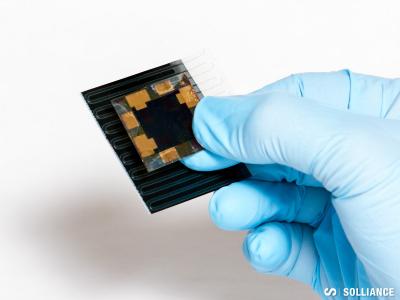Korean research team develops CIGS-Perovskite hybrid flexible thin-film solar cells
A joint research team from the Gwangju Institute of Science and Technology (GIST) and the Korea Photonics Technology Institute has developed perovskite-enabled hybrid flexible copper indium gallium selenide (CIGS) thin-film solar cells that can convert all ultraviolet, visible and infrared sunlight into electric energy.
Current flexible CIGS thin-film solar cells are limited by a short wavelength band, from 300 to 390 nanometers, which is absorbed from the transparent electrodes at the top of the solar cell. They cannot convert short wavelength solar energy into electricity. The research team succeeded in developing CsPbBr3 perovskite high-efficiency fluorescents that light up visible light bands by absorbing the light in the ultraviolet region, and applied them to the top of the transparent photoelectric layer of CIGS solar cells.









